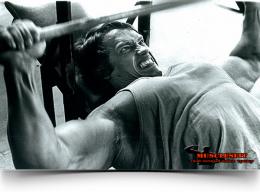How to do bench press properly
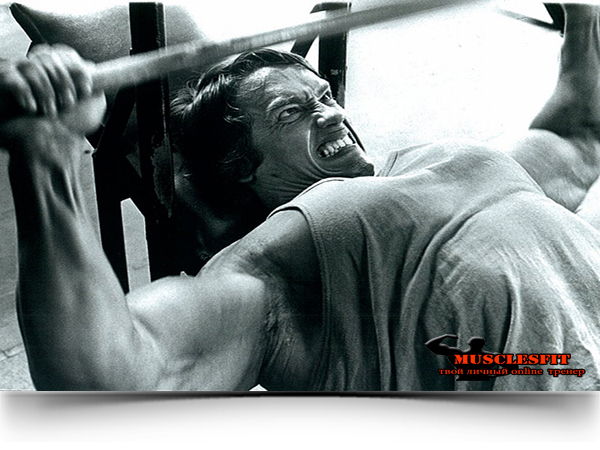
How to do bench press properly
Hello to all visitors and readers of the blog site. Today, something inspired me to write a post about a classic strength exercise, namely the bench press on a horizontal bench. As you know, there are a lot of options for performing this exercise: it is a press up and down with your head at different angles, on a horizontal bench, a press with a narrow and wide grip. In addition, they share the execution technique: power and bodybuilding. It is the latter that will be discussed. So, with an emphasis on building muscle volume.
To begin with, let's decide on the nuances that you need to pay attention to during the horizontal bench press:
The bench press technique consists of six important points, none of them can be neglected, otherwise, all your efforts will lose their meaning. Or rather, of course, you will become stronger and bigger, but not in the way you could. Personally, my opinion is that if you do something, then do it qualitatively or not at all. I hope you share my position. Therefore, in order to explain how to properly do a bench press, let's go through each moment separately. Let's start with the first one.
How to isolate the chest muscles
If the goal of doing the horizontal press is to gain muscle mass, then in no case should you do a bridge, as this will facilitate the execution of the movement, this should be avoided. For a bodybuilder, it is important to make the work of one specific muscle as heavy as possible, turning off auxiliary ones from work as much as possible.
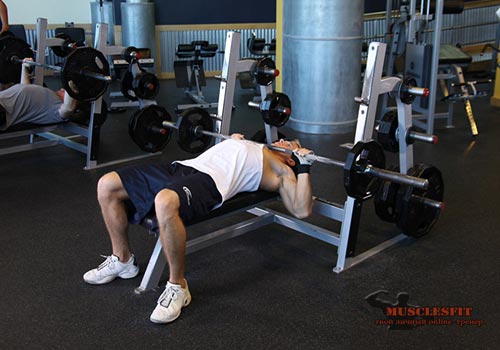
At the same time, you need to know that bridge is not necessarily a professional powerlifting bridge, it is enough to raise your lower back above the bench, and it will be much easier to perform the bench press. Therefore, do not allow space to appear between the lower back and the bench, otherwise the triceps, back muscles and even legs will “steal” the load from the pectoral muscles.
To avoid this, press the buttocks to the bench, if this does not help, then I recommend bending your knees and putting them on the bench for bench press. If you have done everything correctly, then during the movement the palm will not pass under the lower back.
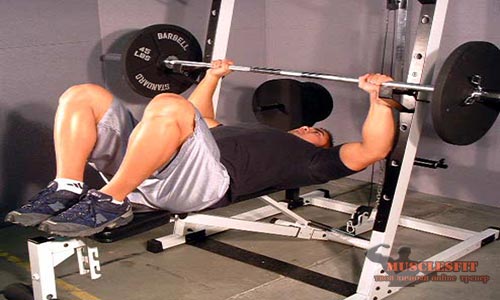
Bench Press Grip Width
An equally important aspect in proper technique is the width of the grip in the bench press. For an effective study of the pectoral muscles, the grip is slightly wider than the shoulders, now I will explain why it is.
The first reason lies in the same isolation of the muscles, and the second in the length of the amplitude of movement. On the one hand, if you take the bar too wide, then the target muscle will work mainly, but, on the other hand, the amplitude will become too short, which will make it difficult to load the pectorals with high quality. You will have to do a large number of repetitions, which will negate the whole principle of training for hypertrophy.

Okay, well, what if you take the bar with a narrow grip. In this case, the amplitude will become long enough, but this will no longer be relevant, since the triceps will work mainly, and it is more suitable for it. Therefore, it is advisable to stick to the golden mean and do the bench press with an average grip, slightly wider than the shoulders.
Amplitude in the bench press
When you do a purely bodybuilding bench press, you need to work as if inside the amplitude. This means that you must maintain a slight angle at the elbows at the top point. It is important not to put the barbell on the elbows because the grip with which we work is still narrow and straightening the arms at the top of the amplitude will certainly include the triceps in the work.
At the bottom point, it is better not to touch the chest with the bar. It is permissible to touch a little, but do not put. I recommend not to bring the bar to the chest by about one or two centimeters.
Rod trajectory
At the initial stage, you need to press the bar strictly along a vertical path. Such a trajectory of the movement of the bar optimally loads the pectoral muscles, and it is easier to control it. A more professional trajectory involves shifting the upper point of the amplitude to the level of your eyes, that is, you need to press the barbell at a slight angle.
The second option is much more effective, but it is also much more difficult to control the technique with it. Therefore, it should be considered when you have already become a fairly experienced athlete.
The pace of the exercise
When answering the question of how to properly do a bench press, you should not miss the pace of this exercise. The main idea is that all movements should occur smoothly without significant jerks. In this case, you need to lower the barbell more slowly than you raise it. More specifically, you need to spend about 1-2 seconds on the rise, and 2-3 seconds on the descent.
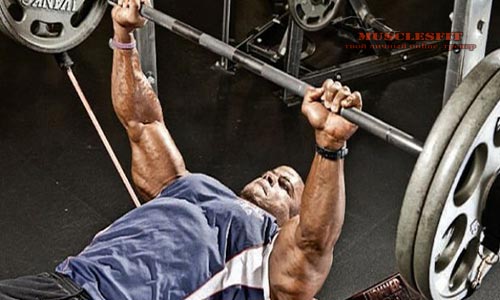
In addition, it is necessary to linger at the top for one second to allow the chest muscles to contract as much as possible - this is called a peak contraction.
Breathing in the bench press
The breathing system in the bench press is traditional. A sharp exhalation on effort, that is, when lifting, and inhalation when moving down. In principle, there is nothing complicated, the main thing is not to forget to breathe. This is not a joke, you often have to see how people do not breathe during exercise, which at least prevents them from training well.
Breathing can also help breastfeeders get more exercise. To do this, "inflate" the chest before the press, so you can better feel the contraction.
That's all, just six rules, following which you can do horizontal bench press as efficiently as possible. I think now it’s not a question for you: how to properly do a bench press. But this is all theory. Practice, watch your technique and don't lose patience..


